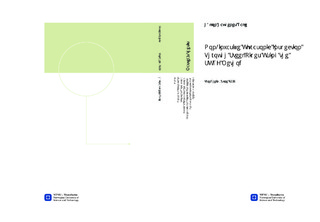Non-invasive Ultrasonic Inspection Through Steel Pipes Using the SURF Method
Master thesis
Permanent lenke
http://hdl.handle.net/11250/2371117Utgivelsesdato
2014Metadata
Vis full innførselSamlinger
Sammendrag
The main objective of this thesis has been to study the possibility to establisha simulation tool for Second Order Ultrasonic Field (SURF) based on finiteelement modeling implemented in COMSOL Multiphysics. The SURF methodis a dual-frequency ultrasonic imaging technique where two waves are trans-mitted in the same direction with a large separation in frequency of about 1:10.This causes interaction between the waves, which give rise to non-linear soundpropagation. The method can be used for enhanced ultrasonic imaging ca-pabilities. The COMSOL implementation has been documented and throughstudies of normal incident waves and oblique incident waves at a steel interface,the advantages and disadvantages of the implementation has been highlighted.The SURF method has been implemented in the built-in physical interfacesof Pressure Acoustics and Acoustic-Solid Interaction in COMSOL. Simple 2Dnormal incident plane wave simulations have been compared to theoreticallycalculated values of non-linear speed of sound, with matching results. Thestudy of the plane wave model has been extended to include water and steelmodeled as both linear and non-linear materials. Studies on the possibility ofanalyzing non-linear materials behind steel have shown possible ways to ensuretransmission through steel, despite high impedance ratios between water andsteel. The most promising methods proved to be based on impedance match-ing and standing waves which coincides with other studies on the topic.Simulations with the Acoustic-Solid Interaction interface on large models,which include structural waves and deformations, have been bounded to alow frequency study in a SURF scheme. This is because of a rapidly increas-ing computational time, as a function of degrees of freedom to solve for in themodel. Estimations predict solution time of in terms of weeks on large scalemodels, when the fundamental convergence criteria of elements per wavelengthand number time steps in a time dependent finite element analysis are fulfilled.Possible measures to overcome this are performing the simulations on a morepowerful computer, modifying the implemented solution process or using adifferent solver than the direct solver used in this thesis.
